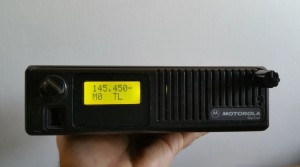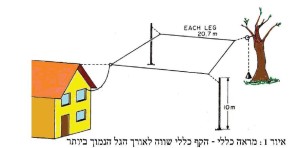- Home
- Registration
- Site Tools
- Articles
- Swap n Shop
- Contesting
- Grounding information for everyone
- History of the Central Alberta Amateur Radio Club
- CAARC owned Repeaters
- Club Repeater Info
- GMT Time Conversion Table
- VE/VA6 Incoming QSL Bureau
- Pine Lake Tornado Friday July 14, 2000.
- Amateur Radio to the Rescue
- CANWARN
- HAM Nation with Bob Heil K9EID
- Net info
- Events.
- ARES
- Links and On line study course.
- Field Day 2019
- Members D/L
- Forum/Swap and Shop
va6tj
This user hasn't shared any biographical information
Posts by va6tj

Remote antenna tuner
Oct 11th
Remote tuners are offered by MFJ, LDG and others. Here is my brief review of the LDG RT-100 tuner.
I purchased the tuner new, at what I considered was a competitive price. As you can see from the photo I am using it to tune a horizontal loop antenna close to the feed-point.  The tuner is matching a short section of low loss open wire line and not a long section of coax.  The tuner requires 12V DC at low current so I powered it from a gel cell battery and a small solar trickle charger panel (CND$14). This remote solar power arrangement has been in operation for several months now without issue.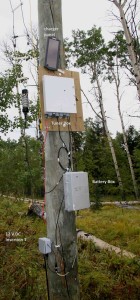
The tuner finds a match from 80 – 10 meters on the random length loop (~130m of #10 multi-strand insulated wire, 10m high).
I have found a few issues with tuning; i.e. failing to find a good match on a band or frequency. As per the instruction manual a tune can be “forced†by changing bands, re-tuning and then returning to the frequency you want to operate on.
The second issue noted is a de-tune with changing weather / moisture conditions. For example rain or heavy dew on the antenna may cause the antenna to re-tune. This does not often happen but it is inconvenient there is a re-tune cycle in the middle of a QSO.
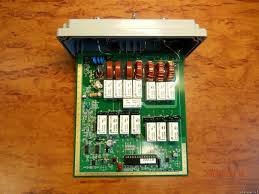

I experimented with different baluns and found that a 4:1 air core balun worked best for me. This balun is very easy and inexpensive to make using parts from the hardware store.   The antenna is maintained at DC ground through the balun and tuner. (Yes, the ground wire should have been green…major fail !)

Using the remote tuner I was able to operate on SSB effectively on multiple bands with a single wire antenna using only 100 W. The loop antenna was found to be very quiet as a receive antenna. On 20m a signal barely audible on a dipole was perfectly Q5 on the loop antenna.
So if your opportunities for erecting antennas are restricted my experience shows that a multi band wire antenna with a remote tuner and one feedline can be an effective way to operate HF.

Maxdroid
Sep 9th
Maxdroid
Modification to add a digital display and continuous frequency selection to VHF/UHF Maxtrac transceivers.
By
Avinoam Albo, 4X1HF Avinoam.albo@gmail.com
December 2014
Conversion of a Maxtrac to a transceiver with display and frequency selection
In this article I will explain how to convert the venerable Maxtrac to a rig more user friendly to radio amateurs. The modification requires  the addition of only a few inexpensive and easily available components. When the modification is completed you will have a rig with digital display and frequency selection enabling continuous  coverage over the whole range of frequencies  where the VCO locks. An external programmer is no longer needed.
Disclaimer: Carrying out the modification described requires basic electronics skills. Any modifications are the sole responsibility of the technician. This modification will likely void type certification for commercial radio service.  This article does not make any specific claims or recommendations.
Specifications of the transceiver after this modification
- Digital display
- Continuous frequency selection
- Selection of transmitter output power (2 levels or more)
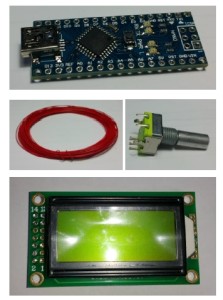
- Selection using VFO or memories
- Selection of VFO frequency steps (5K, 10K, etc.)
- Receive PL (on/off)
- Scanning and saving frequencies to memory (future)
Required ComponentsÂ
- Maxtrac VHF or UHF
- Arduino Nano 328 controller
- Rotary encoder
- LCD 08 X 02 (8 characters x 2 lines)
- 3K, 4.7K, 8.2K, 10K resistors
- Fine gauge insulated hookup wire such as wire wrap wire
Programming the transceiver More >

Horizontal Quad Antenna
Sep 8th
Horizontal Quad Antenna
By: Eli Kovo, 4X4LH (originally published in the IARC newsletter 08/2015 “HaGal†and used with permission of the author.  Translated by: Earl, VA6TJ)
I recently came across an article in an issue of “73 Magazine†from 1978 raving about an antenna called “The German Quad†which [at that time] was used by about half the hams in Germany.  Below I summarize the main points of the article.
The first thing about this antenna is that it works without a tuner on 6 bands, from 10m to 80m and also on 2m. I could not find confirmation that it works on 6m however I am confident that it will also transmit on that band. Compared to a symmetrical dipole, the horizontal quad has the advantage that it can be fed anywhere, even at a point close to the shack as in illustration 1.



